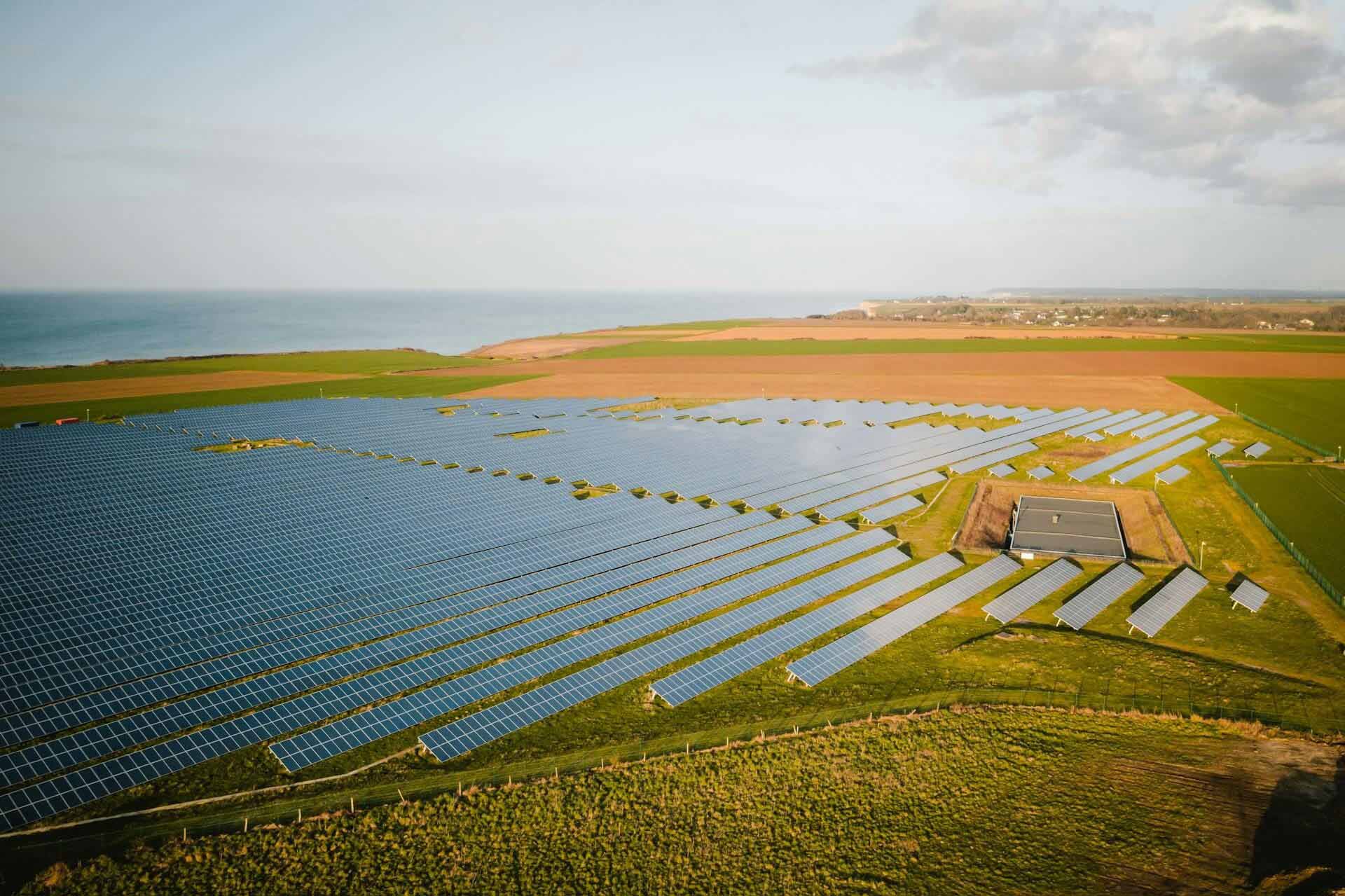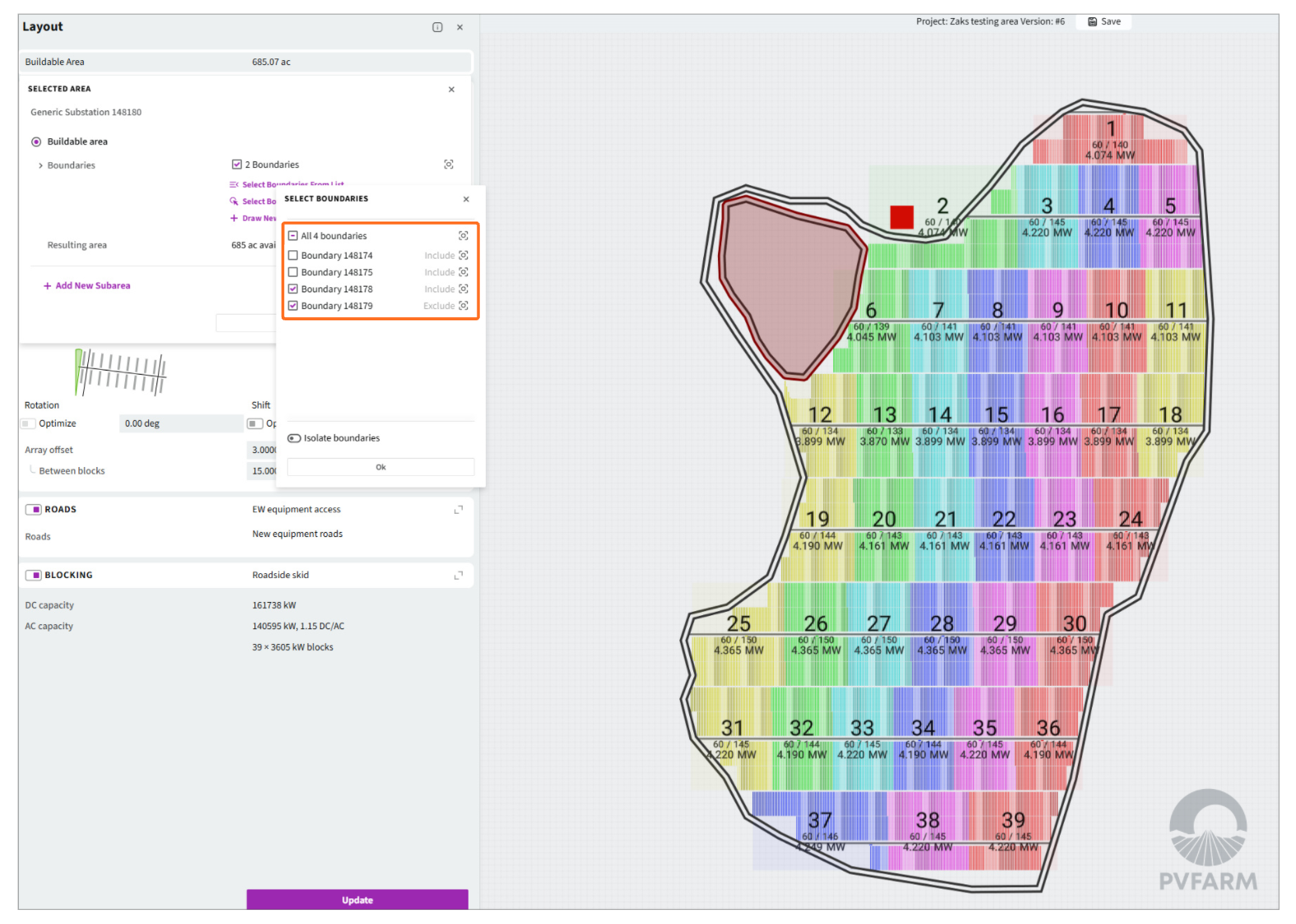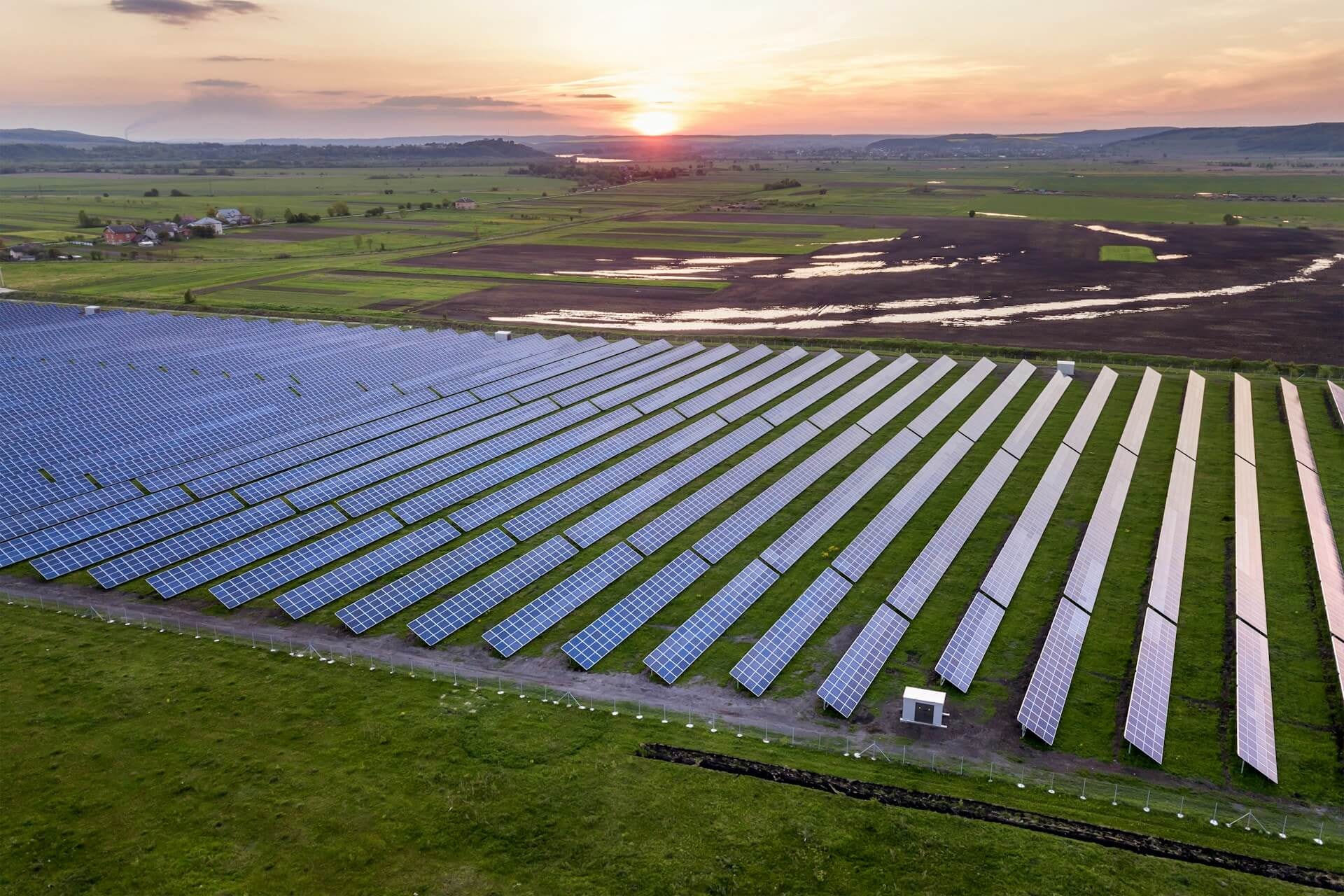Utility Solar Design: Challenges and How to Solve Them Faster

Utility Solar Design: Challenges and How to Solve Them Faster
Utility-scale solar is one of the fastest-growing segments in the renewable energy sector. Across the United States and globally, utility-scale solar projects - typically ground-mounted solar power plants over 5 MW - are reshaping how we generate electricity and displace fossil fuels.
Recent Trends in Utility Solar Design
Over the past two years, utility-scale solar projects have proven central to U.S. clean energy growth. According to the U.S. Solar Market Insight 2024 Year in Review report, solar and energy storage together made up 84% of all new electric generating capacity added to the grid last year.
Record-Breaking Installed Capacity in 2024
In 2024, according to the Solar Energy Industries Association (SEIA), the solar industry broke multiple records:
- The utility-scale segment alone installed a record 41.4 GWdc, a 33% year-over-year increase - the largest annual gain in its history.
- Texas led all states with 11.6 GWdc of new capacity, replicating its record-setting performance from 2023.
- Nationwide, 21 states achieved record-breaking solar installations last year, with 13 of them surpassing the milestone of 1 gigawatt each.
- In 2024, the U.S. added an unprecedented 50 gigawatts of solar power - the biggest annual increase in electricity capacity from any energy source in more than 20 years.
Growth Across Market Segments
While utility-scale solar installations dominated, other parts of the industry also saw important shifts. Community solar grew by 35%, and commercial solar expanded by 8% year-over-year.
The residential solar segment saw its weakest year since 2021, with 4,710 MWdc installed. Elevated interest rates and state-level policy shifts drove the decline, but long-term forecasts point to steady recovery and growth over the coming decade.
Installed Capacity Surges in 2025
By early 2025, momentum had accelerated further. U.S. utility-scale solar installed capacity reached 128.6 GW, up from 96.9 GW in early 2024 - an increase of over 30 GW in just 12 months. In the first half of 2025, developers had already added 12 GW of new capacity, with another 21 GW planned by the end of the year. If realized, this means solar will once again represent more than half of all new electricity generating capacity added in 2025.
Unlocking the Potential of Utility-Scale Solar
The impact of utility-scale solar projects is clear. These large-scale installations have the capacity to deliver affordable, clean energy at scale - cutting carbon emissions, strengthening grid stability and generating new opportunities for job creation across the renewable energy sector.
Yet turning this potential into reality is far from simple. Designing utility-scale PV plants means overcoming complex terrain, making informed site selection decisions, addressing transmission and infrastructure constraints, and coordinating a wide range of stakeholders - from solar developers to utility companies and independent power producers.
Unlocking Clean Energy Through Smarter Design
The key challenge is how to deliver utility-scale solar projects with greater efficiency, reduced risk and higher precision?
At PVFARM, we are proud to lead this transformation. Our advanced platform is purpose-built for utility solar design, redefining what is possible in terms of performance, reliability and project outcomes. By combining automation with real-world customization, we empower the solar industry to design smarter, faster and with complete confidence.
The Challenges of Utility-Scale Solar Design
Designing utility-scale solar plants isn’t just about putting solar panels in rows. It is a multidimensional engineering challenge where other factors vary depending on site conditions, equipment choice and regulatory frameworks. Some of the key challenges include:
1. Site Selection and Land Use
The site selection process is critical. A site may look perfect on paper but be unsuitable due to slope, soil conditions, wetlands, or transmission infrastructure limitations. According to the National Renewable Energy Laboratory (NREL), terrain and grading can account for a significant share of project operating costs. Poorly planned grading increases earthworks, delays the installation process and ultimately, undermines the financial viability of large-scale projects.
2. Civil Engineering Constraints
Utility-scale projects are typically ground mounted systems, which means working with real landscapes. Slopes, uneven ground and hydrology can all affect pile depth, land use and installation processes. Conventional software often struggles with large irregular sites, forcing designers into time-consuming manual iterations.
3. Electrical Design and Grid Integration
The electrical grid demands precision. Designing the DC power collection from strings of PV panels, AC power conversion, and integration with utility-scale inverters and transmission lines, requires balancing grid stability with cost. Accuracy in this stage is critical, as mistakes can undermine energy production and jeopardize the ability to meet project performance targets.
4. Energy Modeling and Production Forecasts
For investors and utility customers, understanding expected energy production is key. Errors in solar modules layout or solar cells orientation can translate to millions in lost revenue. According to the Energy Information Administration (EIA), performance ratios in solar plants directly influence the Levelized Cost of Electricity (LCOE) and the ability to provide electricity reliably.
5. Interdisciplinary Complexity
In practice, utility-scale solar design often ends up with civil, electrical and energy teams working through disconnected processes. This fragmented approach slows collaboration, with each design iteration taking days or even weeks to complete - driving up costs and delaying progress. Without real-time integration across disciplines, the entire workflow becomes a critical bottleneck.
How Traditional Tools Address These Challenges
Most design tools in the solar industry have historically been fragmented. A solar developer might use CAD software for site selection, PVSyst for energy modeling, spreadsheets for cost analysis, and separate platforms for grid design. In recent years, newer software solutions have introduced automation to speed up layouts, site selection and basic design processes, however, these tools still fall short of providing fully integrated, multidisciplinary workflows.
The Limitations of Current Solar Design Tools
Many of these tools remain rigid, providing automated outputs but little visibility or control over the design process. They may automate layouts or accelerate early-stage design, but they often limit customization and lack true real-time integration across civil, electrical and energy disciplines. As project sizes grow - especially beyond 500 MW - these limitations may become even more pronounced. Many tools struggle to handle the complexity of advanced grading, transmission infrastructure and other site-specific realities that are critical to the success of utility-scale solar projects.

PVFARM: Solving Utility-Scale Solar Design Challenges Faster
PVFARM was purpose-built to address these exact challenges. Unlike other providers, we integrate civil, electrical and energy analysis into a single, real-time platform, allowing to see the trade-offs instantly. This makes the design process faster and more accurate.
Here’s how PVFARM makes a real difference:
1. Real-Time Multidisciplinary Feedback
While most competitors require exporting data between tools, our software gives real-time analysis of how a change in grading may affect electrical grid losses or energy production. This enables true optimization - something very few others currently offer.
2. Advanced Terrain and Grading Tools
Our PVFARM software allows users to model multiple grading strategies, terrain-following layouts, and pile adjustments. This means solar farms on challenging sites can minimize operating costs without compromising energy yield.
3. Scalable for the Largest Projects
Where some platforms slow down on projects over 200–300 MW, we support utility-scale solar energy facilities up to 800 MW DC without performance loss. This is a key differentiator for global developers handling utility-scale projects of significant scale.
4. Customization Without Black Boxes
PVFARM combines advanced automation with the precision of human expertise. The platform automates baseline designs while allowing users to refine details with real-world equipment, such as solar modules, utility-scale inverters and battery storage systems - ensuring both transparency and full design control.
5. Interoperability with Industry Tools
The platform seamlessly integrates with established solar industry workflows, supporting imports and exports (elevation data, DXF, CSV) and connecting with PVSyst for advanced energy modeling. This ensures designs remain fully compatible across the project lifecycle.
Why This Matters Compared to Other Approaches
Are other solutions delivering what PVFARM does?
The short answer is: not quite. Many tools on the market are effective at automating layouts or integrating with CAD environments, but they rarely provide the real-time, multidisciplinary feedback required to optimize complex utility-scale solar installations. Some can speed up early-stage financial modeling or site layouts, yet they often lack advanced terrain and grading intelligence - or the ability to seamlessly unify civil, electrical and energy design.
Traditional engineering workflows add further challenges. Passing files between disconnected software platforms slows collaboration, introduces risk at every handoff and drives up costs. Without an integrated approach, these inefficiencies can become bottlenecks that compromise project outcomes.
Beyond the Limits of Conventional Solar Design Software
PVFARM closes these gaps by unifying civil, electrical and energy analysis within a single platform. This integrated approach addresses the real-world complexities of utility-scale solar design, delivering faster results, greater precision and fewer compromises.
Who We Work With
PVFARM is built to support the full range of stakeholders shaping the growth of utility-scale solar. From EPC contractors to developers and manufacturers, our platform addresses their unique needs - helping each deliver projects more efficiently, with greater precision and confidence.
EPC Contractors
Engineering, procurement and construction firms face intense pressure to deliver projects on time and within budget. PVFARM provides real-time multidisciplinary feedback, helping EPCs optimize layouts, grading strategies and electrical design in a single platform. This reduces design iterations, minimizes risk and shortens project timelines - directly improving profitability and client satisfaction.
Developers
Developers need accurate, reliable designs that stand up to investor scrutiny and scale seamlessly from early feasibility through to execution. With PVFARM's design and project management software, developers can model multiple scenarios, compare grading and infrastructure strategies and understand outcomes in real time. This empowers faster decision-making, reduces uncertainty, improves project viability and strengthens investor confidence.
Manufacturers
For manufacturers of PV modules, trackers, piles and inverters, project success depends on ensuring products are designed and deployed in the most efficient way. PVFARM enables manufacturers to validate performance in real-world terrain and grid conditions, helping them demonstrate value to developers and EPCs, while reducing costly misalignments during construction.
By bringing these stakeholders together on a single, integrated platform, we have created a shared environment that improves collaboration, reduces risk and accelerates the successful delivery of utility-scale solar facilities.
Engineering Firms
For engineering firms and consultants, PVFARM speeds up and de-risks the parts of engineering that are repetitive, error-prone, or difficult to scale. Letting engineers focus on high-value technical decisions and client relationships. Practically: faster feasibility, more accurate layouts/yield/costs, cleaner handoffs to procurement & construction, and better repeatability across projects.

Broader Benefits of Faster, Smarter Utility-Scale Solar Design
Adopting a platform like PVFARM isn’t just about saving design time, though we've seen reductions of up to 96%. It’s about unlocking broader benefits that transform how we approach utility-scale solar projects.
By using PVFARM, we deliver measurable advantages throughout the design and delivery process:
- Stronger collaboration by unifying civil, electrical and energy teams within a single platform.
- Reduced risk exposure with real-time visibility into design impacts before construction begins.
- Higher profit margins through smarter layouts, optimized grading and minimized earthworks.
- Sophisticated analysis that goes beyond automated layouts, enabling smarter decision-making on site selection, infrastructure and equipment.
- Scalability to handle projects from tens of megawatts to multi-gigawatt solar facilities with the same precision and efficiency.
The Future of Utility-Scale Solar Design
The growth of utility-scale solar energy is essential to meeting global climate change goals and reducing greenhouse gas emissions. But the success of future utility-scale PV plants depends on how well we solve the challenges of utility-scale solar design today.
Integration is Key to Next-Generation Solar Projects
By integrating real-time, multidisciplinary intelligence into the design process, PVFARM sets itself apart from other tools in the market. It empowers solar developers, independent power producers and utility companies to deliver higher quality solar power plants faster and with greater assurance.
As the solar industry continues to gain momentum, platforms like PVFARM embody the future of utility-scale installations - where speed, precision and integration distinguish ordinary projects from truly transformative solar farms that deliver clean electricity, cut carbon emissions and create lasting value.
Connect With Us Today
Ready to see how PVFARM can transform your next project? Let’s chat or book a demo today.

.jpeg)

%20(1).png)

.png)
